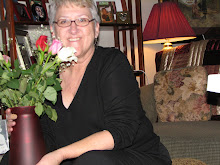(the following was written in August of 2007)
Crabbing, as I discovered on a recent vacation, is a well-orchestrated ritual that, seen from the crab’s point of view, leaves something to be desired. Seen from the diner’s perspective, however (if one can get past the sight of blue pincers waving wildly as the crabs are tossed into boiling water) the endeavor is a sweet one, indeed.
On my first visit to the Outer Banks of North Carolina, my daughter, Alison, and her boyfriend, Ben, invited me to accompany them to Carratuck Sound, just down the road from his family’s Beach House. Alison, whose childhood experiences with seafood had been limited to the occasional shrimp cocktail or fast food filet on a bun, surprised me by efficiently assisting Ben as he loaded traps with fish heads and translucent skeletons of unidentifiable fish. They were large enough that they needed to be broken in halves, and occasionally thirds. She cringed, but she did it.
She and Ben then climbed down a short ladder into the Sound and walked a good distance from the pier through brackish waist-high water, placing the traps several yards apart, making certain that empty milk bottles were securely attached as markers to facilitate retrieval of the pots. The fiery sun dipped below the horizon as we walked back to the house, anticipating the next night’s meal. Would it be a good catch? What comprised a good catch? Would whatever crabs we caught be big enough to keep?
Approaching the pier the next day our conversation centered around what we might find. Alison and Ben retrieved the pots, carrying one in each hand as they walked through the water and tossed them unceremoniously onto the pier. My toes tingled as the crabs were dumped out of each pot into a cooler. Some invariably escaped, causing me to do a little jig to keep them from biting my toes. “Get that one!” I shrieked. “And that one! Acckk!” Hysteria crept into my voice as I snapped picture after picture of the entire unsettling event.
Ben used a customized two by four with a sawn out space that made measuring the crabs an efficiently frustrating process. Where I saw a cooler full of dinner, Ben and Alison saw “a couple of good ones, but lots of losers.” Anything that didn’t fill up the space in the two by four, tip to tip, failed the test and was tossed back into the sound. Good news for the crab, bad news for us.
Back at the house, a deep pot of water had been put on the stove to boil, seasoned with the only acceptable option, Old Bay Seasoning. As Ben’s dad, Bob, reached into the cooler that had served as a crab taxi from Sound to sink, I snapped a series of photos, distancing myself from the murder scene. Claws grabbed frantically toward other claws and I tried to resist thinking of families being torn asunder.
In fact, the crabs didn't seem to like each other much. It was every crab for himself: the larger ones seemed intent on attacking smaller ones even as they were dangled over the boiling water. And here’s the amazing part. The fairly innocuous sand-colored crabs, each sporting a bright blue claw (unless it’s already been lost in a previous skirmish) emerged, 11 minutes later, that lovely classic shade of red that I’ve always associated with crustaceans. Shrimp turn from light pink to dark pink, but blue to red? What else does that? I haven’t a clue.
Newspapers covered the sizeable table as we sat down to enjoy our feast. I was given a cursory lesson in crab deconstruction and began to see, or rather taste, the appeal of the entire enterprise. Crush this, grab that, squeeze here and voila! Delicate, succulent pieces of crab were mine for the taking.
Getting up close and personal with the critters in this sea-to-table event was a memorable experience and I look forward to doing it again sometime, but would I want to catch and kill my next serving of, oh, let’s say… beef tips… or pastrami? I don’t think so.
Subscribe to:
Post Comments (Atom)


No comments:
Post a Comment